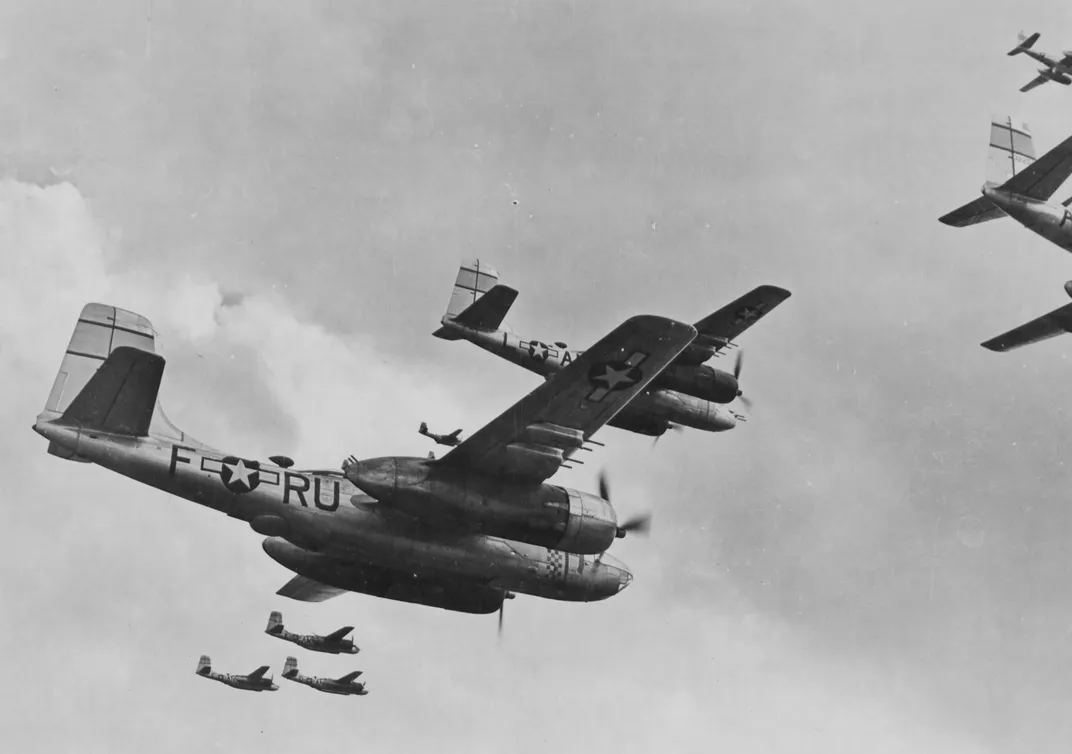B-26 Marauders, A-26 Invaders
/https://tf-cmsv2-smithsonianmag-media.s3.amazonaws.com/filer/57/c3/57c32241-c5ae-4fa5-829c-b37e60b9e396/b-26.jpg)
Hours before sunrise on June 6, 1944, B-26 Marauder pilots stationed in England woke up to find their airplanes freshly painted in black and white stripes: The Allied invasion of occupied Europe was under way. Any airplane without stripes was likely to be shot down by Allied gunners.
The Marauders took off in rain. A low cloud front pushed them down as low as 3,500 feet, where the bombardiers could see their targets: German guns aimed at anything that tried to cross the narrow strand code-named Utah Beach. Nearly 300 Marauders dropped more than a million pounds of explosives, keeping losses among landing forces low, compared to the carnage on Omaha Beach, targeted by high-flying heavy bombers.

Still, the B-26 was not what Hap Arnold had in mind for Normandy. He had wanted its successor, the Douglas A-26 Invader. That aircraft became the fastest U.S. bomber of the war. The A-26 earned its own kind of stripes through a long, successful life, including service in Korea and Vietnam.
Back to A History of WW2 in 25 Airplanes
Next: Hellcats, Helldivers, and Avengers
Last: C-47s on D-Day